Key takeaways:
- Web development requires collaboration between developers and designers to create functional and engaging websites.
- Effective communication and clear project goals enhance teamwork and lead to successful outcomes.
- Providing constructive feedback during the design process fosters creativity and encourages designers to improve their work.
- Building long-term partnerships with designers is essential for trust and shared vision, which ultimately strengthens project success.
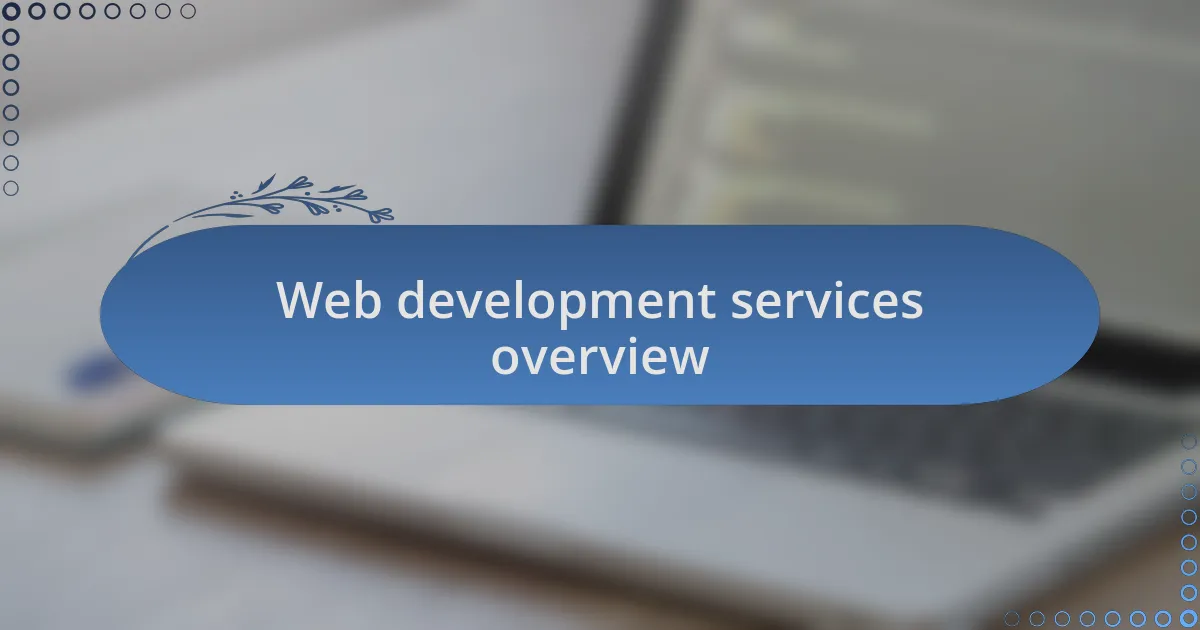
Web development services overview
Web development services encompass a wide range of tasks that bring a website to life, from coding and programming to user experience design. When I first ventured into web development, it amazed me how each component, whether it was a simple button or a complex database, needed meticulous attention to detail. Have you ever wondered how that sleek website you visited was constructed behind the scenes?
The core of web development lies in creating a platform that is not only functional but also captivating. I recall a project where collaboration with designers was critical in ensuring that the user interface was intuitive. It made me realize how much the visual aspects can impact user engagement—what’s the point of a beautiful design if the underlying structure is flawed?
Furthermore, different web development services address specific needs, such as front-end development, which focuses on the site’s visual and interactive elements, and back-end development, which deals with the server and database interactions. Each role serves as a vital cog in the machine, reminding me of how critical it is to foster communication between developers and designers to achieve a seamless end product. Isn’t it fascinating how intertwined our roles are in crafting an effective online presence?
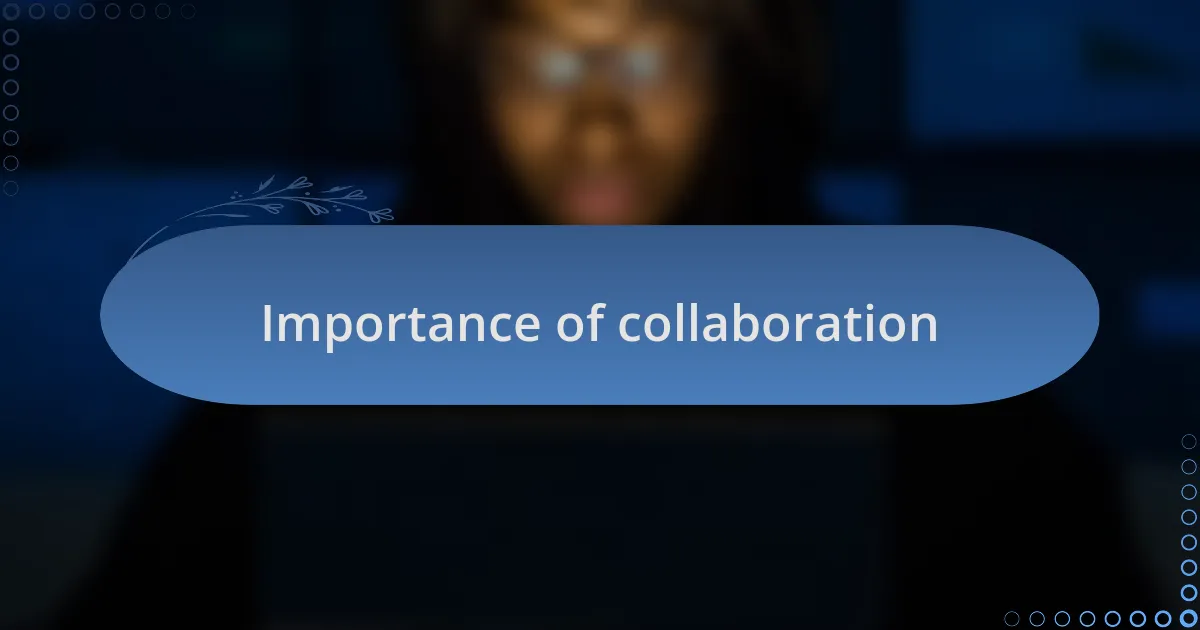
Importance of collaboration
Collaboration is essential in web development because it brings together diverse perspectives and expertise. I’ve often seen how a designer’s insight can elevate a developer’s technical vision. For instance, during a recent project, I found that the fusion of creative ideas with technical execution led to solutions I hadn’t considered. It was like seeing the color palette come alive on the canvas of code. Have you ever experienced the rush of a breakthrough that stemmed from collaboration?
When developers and designers communicate effectively, they create a synergy that enhances the entire project. I remember working on a website where our brainstorming sessions led us to rethink the user journey entirely. It was invigorating to see how every adjustment to the design anticipated user behavior, resulting in a smoother navigation experience. This close collaboration underscored the importance of each role in achieving a common goal.
Ultimately, the success of a web project hinges on collaboration. It allows for constructive feedback and iterative improvements, which are critical in today’s fast-paced digital landscape. I can’t stress enough how imperative it is to cultivate a culture of open dialogue; it transforms challenges into opportunities, fostering a productive environment. Have you ever thought about how your feedback might spark a new idea in a team setting?
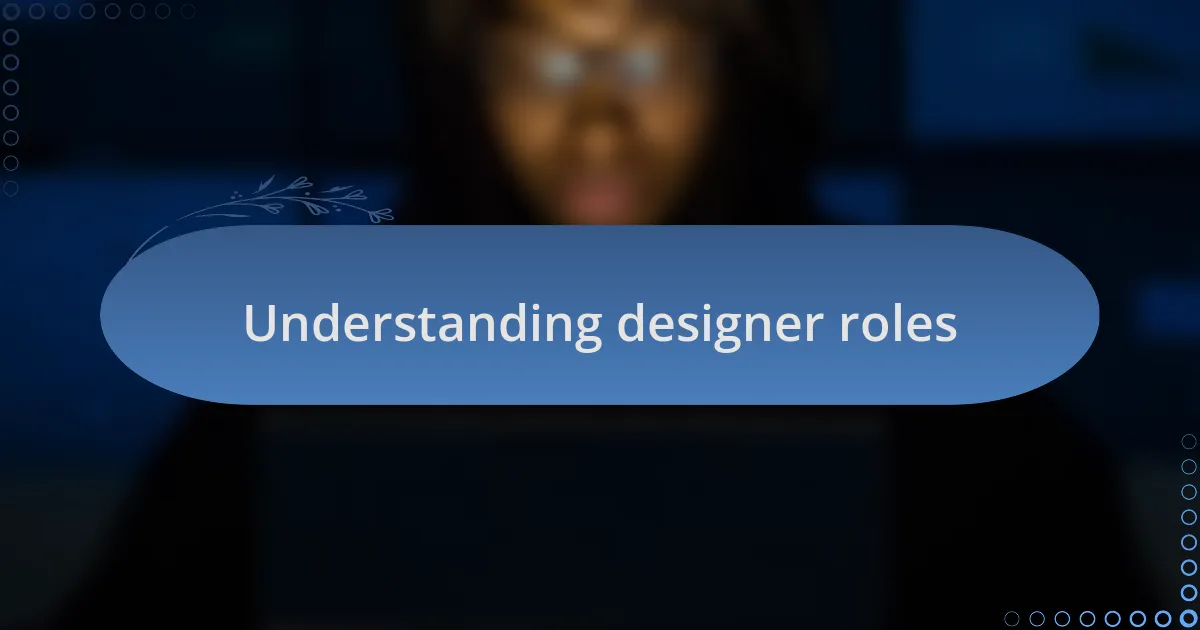
Understanding designer roles
Understanding designer roles is essential for fostering effective collaboration. Designers typically fall into various categories, such as UI (User Interface), UX (User Experience), and graphic designers. Each of these roles brings a unique perspective; for example, while a UI designer focuses on aesthetics and layout, a UX designer prioritizes user flow and interaction. I once worked with a UI designer who transformed drab buttons into dynamic, inviting elements. That simple change heightened user engagement significantly. Have you realized how much the look and feel of a button can impact overall interaction?
When I think about the specific duties of designers, it’s clear they’re not just about making things pretty. Their insights shape the user journey, ensuring that each element serves a purpose. In a project where I collaborated with a UX designer, we held regular feedback sessions to evaluate user testing results, which led to critical adjustments in our design. This process emphasized the importance of a designer’s role in bridging user needs with functional design. Doesn’t it make you appreciate the thought that goes beyond visuals?
In recent years, the landscape has evolved, and designers often take on roles that encompass more than just creativity. They must understand technology, market trends, and user psychology. While working on a responsive website, I found that the designer’s adaptability in using different tools and understanding coding basics greatly influenced our workflow. It’s remarkable how a designer’s foresight can anticipate future challenges, ensuring that the final product not only looks appealing but also meets technical requirements. Don’t you think that having a designer with such a comprehensive view can really elevate a project?
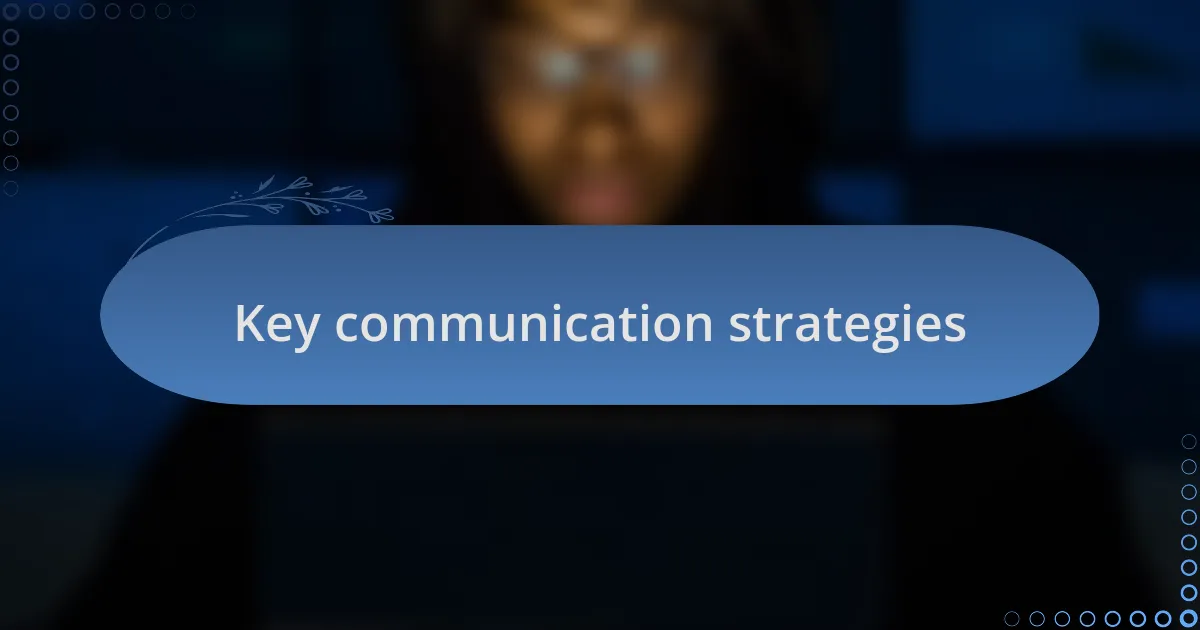
Key communication strategies
When it comes to collaborating with designers, clarity in communication is paramount. I remember a project where miscommunication around timelines led to a frustrating last-minute scramble. After that, I made it a point to establish weekly check-ins to discuss progress and expectations—these simple conversations went a long way in ensuring everyone was on the same page. Have you ever experienced the stress that comes from unclear expectations?
In my experience, using visual aids can bridge gaps in understanding when discussing design concepts. For instance, sharing mood boards or wireframes not only provides context but also invites designers to express their creativity within a defined framework. I once presented a sketch to a designer, which sparked ideas I hadn’t considered, ultimately leading to a more cohesive design. Isn’t it amazing how a few visuals can ignite inspiration?
Another strategy that I’ve found effective is encouraging open-ended feedback. I like to foster an environment where designers feel comfortable voicing their opinions, especially during brainstorming sessions. I’ve learned that some of the best ideas come from those off-the-cuff conversations where everyone feels empowered to contribute. How often do you give your team the freedom to explore ideas without judgment?
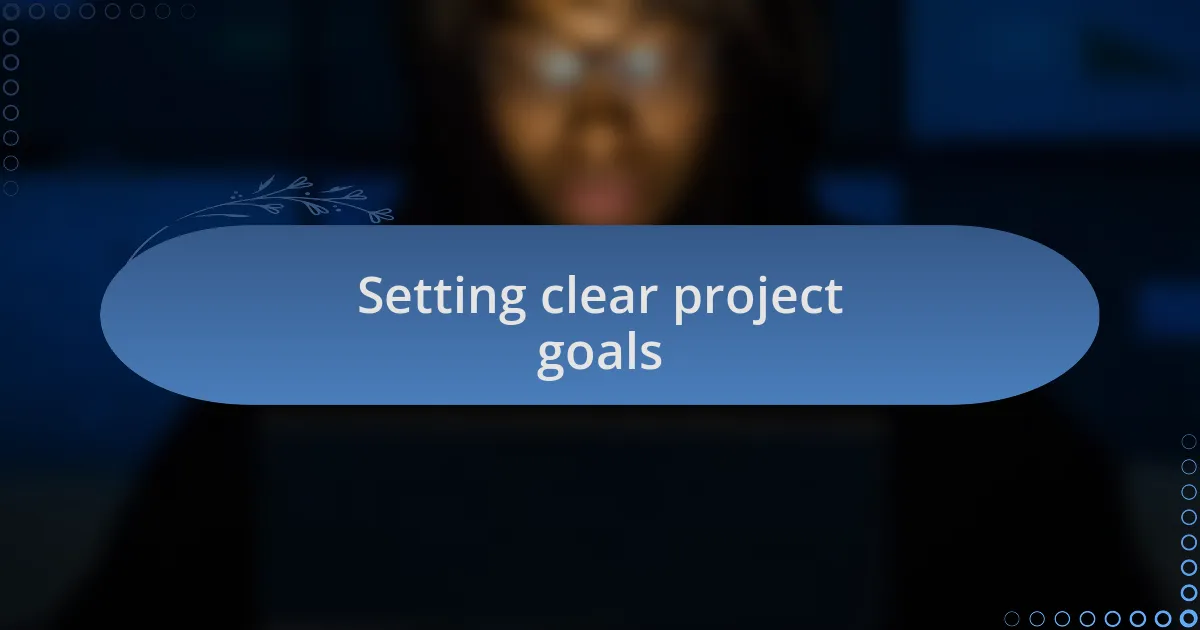
Setting clear project goals
Setting clear project goals is essential for productive collaboration. I once dove into a project without a defined scope, thinking we could figure things out along the way. It turned out to be a nightmare—constant shifts in direction left both the designers and me feeling overwhelmed and frustrated. Have you ever taken on a challenge without understanding the end goal?
When I learned to set precise and measurable goals upfront, it transformed the way I worked with designers. For instance, during a recent project, we outlined specific user experience benchmarks and visual styles from the beginning. This not only kept us focused but also gave the designers clear targets to hit, which I noticed boosted their confidence. Isn’t it reassuring to have a concrete framework to guide your creative process?
I’ve found that documenting these goals collaboratively can enhance commitment and engagement. By involving designers in goal-setting discussions, they feel a sense of ownership over the project. I vividly remember discussing our vision with a team member who brought up an aspect I hadn’t considered. Their enthusiasm about contributing to the goals ignited a sense of teamwork that made the entire project more enjoyable. Don’t you think shared ownership can make a significant difference in project outcomes?
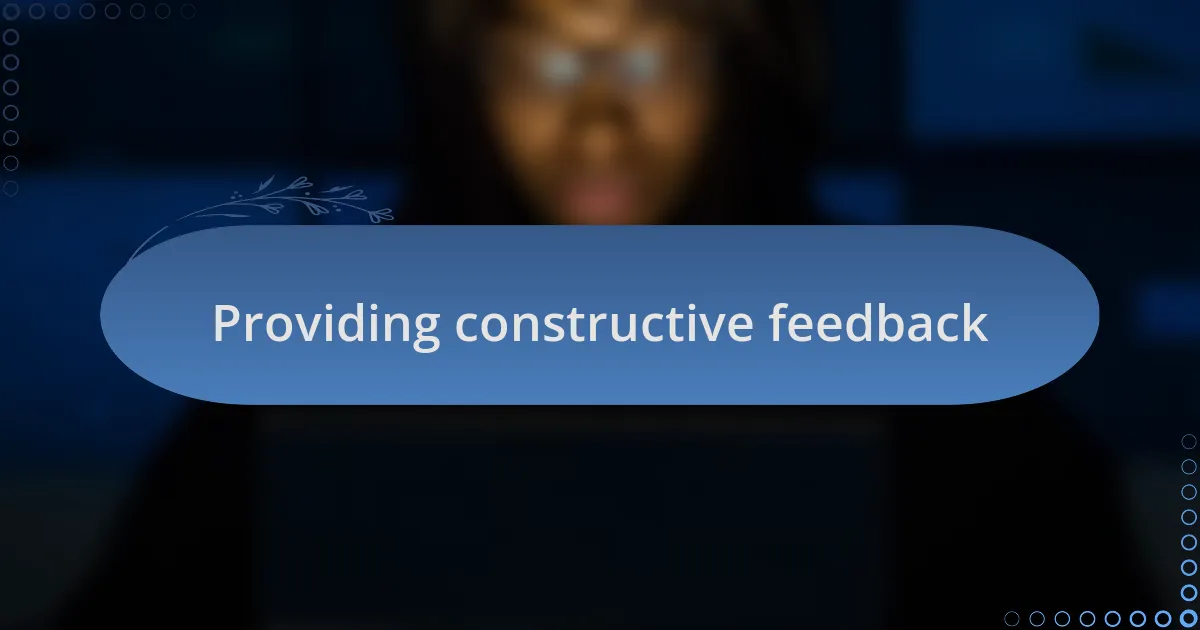
Providing constructive feedback
Providing feedback is an art that can make or break a design project. I’ve had moments when I handed over feedback without much thought—just a list of changes. The designers often seemed discouraged, thinking I didn’t appreciate their efforts. Have you ever noticed how tone can shift the reception of feedback? I’ve learned that phrasing my input constructively, like “This part resonates well, but could we explore a different approach for this section?” opens up a dialogue, rather than shutting it down.
Clarity is paramount when offering constructive feedback. On one occasion, I received design drafts that were beautiful, yet I struggled to pinpoint why they weren’t quite right for our target audience. Instead of vague remarks, I took the time to express specific concerns, such as user navigation and readability. As we discussed these points, not only did the designers feel more connected to the project, but they also thrived on the challenge of making those adjustments. Isn’t it fascinating how a little specificity can energize the creative process?
Lastly, I’ve realized that timing can significantly affect how feedback is received. I used to wait until the end of a project to share my thoughts, thinking that I was being respectful of the designers’ workflow. However, I discovered that providing feedback during key milestones fosters iteration. Once, we had a mid-project check-in, which led to invaluable insights that reshaped our direction before it was too late. Do you agree that making feedback a continuous conversation can lead to better outcomes?
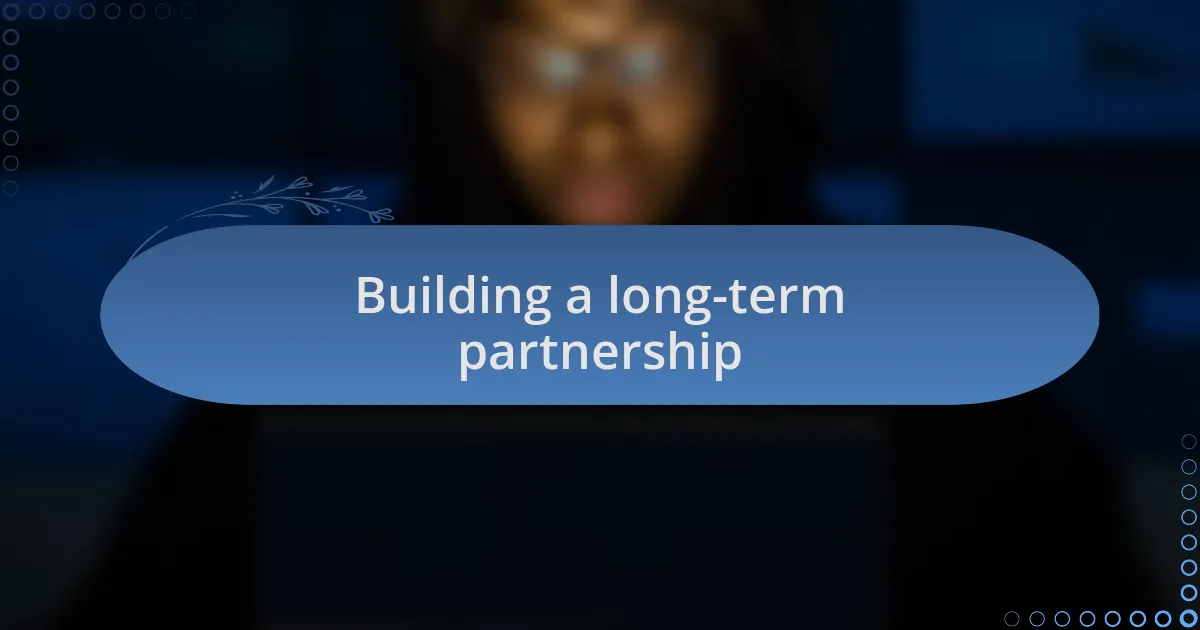
Building a long-term partnership
Cultivating a long-term partnership with designers involves more than just collaboration; it requires trust and open communication. I remember a particular project where my designer and I had developed a rhythm over weeks of working together. Instead of just sharing deadlines and tasks, we began discussing our individual processes, leading to a deeper understanding of each other’s strengths. Has that ever happened to you? When you can rely on the other person’s skills and vision, the whole experience becomes much more collaborative and fruitful.
In my experience, shared goals are the backbone of a solid partnership. There was a time when my team and I set a specific aim for a project; we all envisioned the end product together. This united vision was powerful—it transformed our working days into brainstorming sessions filled with excitement and camaraderie. How often do we leave out the discussion of our end goals? Aligning on what we want to achieve fosters a sense of ownership and accountability.
Moreover, I learned that celebrating successes—big or small—can strengthen the bond with my design team. After completing a challenging project, I organized a small virtual gathering. Sharing our achievements sparked joy, and everyone felt appreciated for their hard work. Have you ever taken a moment to reflect on your partnership’s milestones? Recognizing these victories not only improves morale but also builds a resilient relationship for future endeavors.